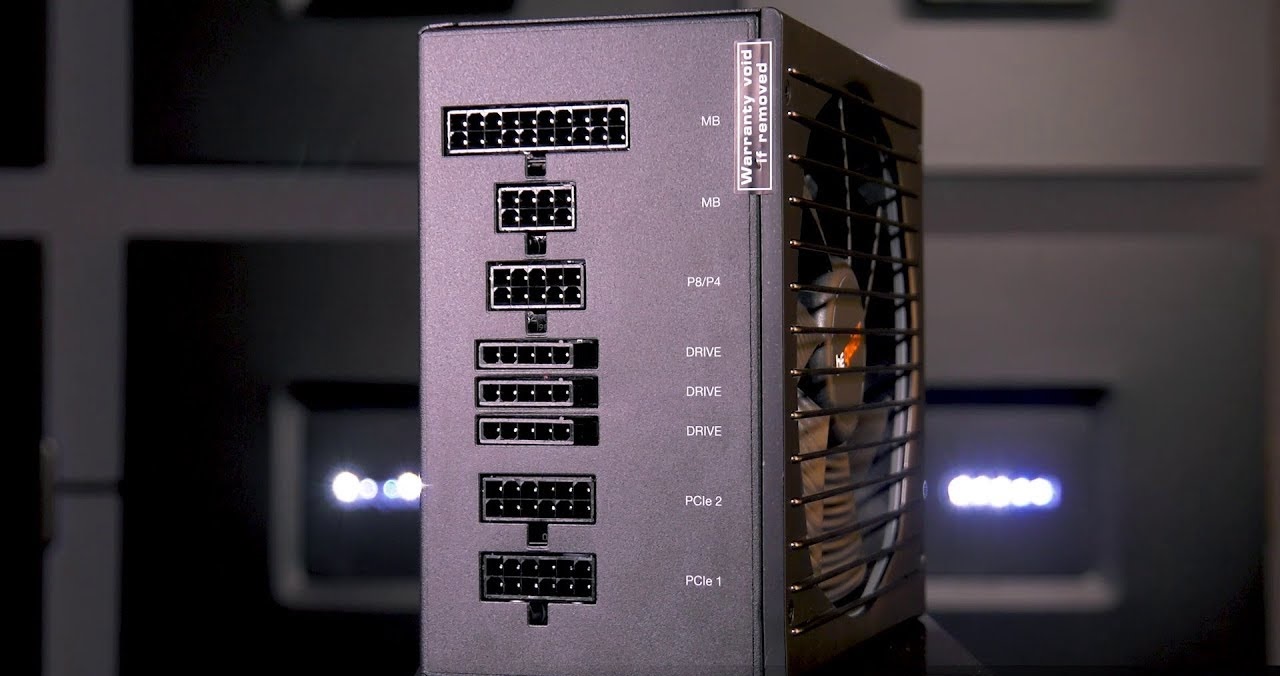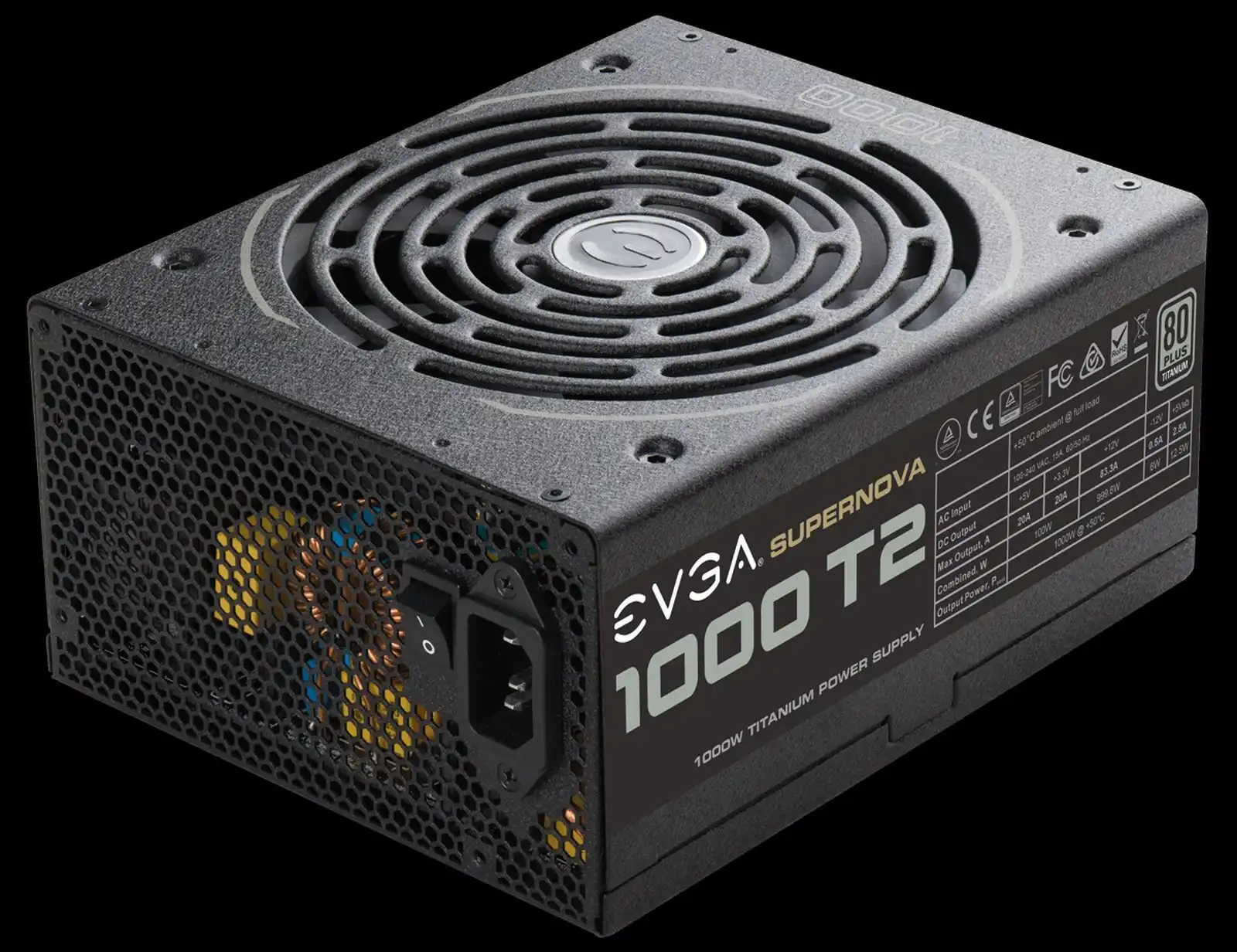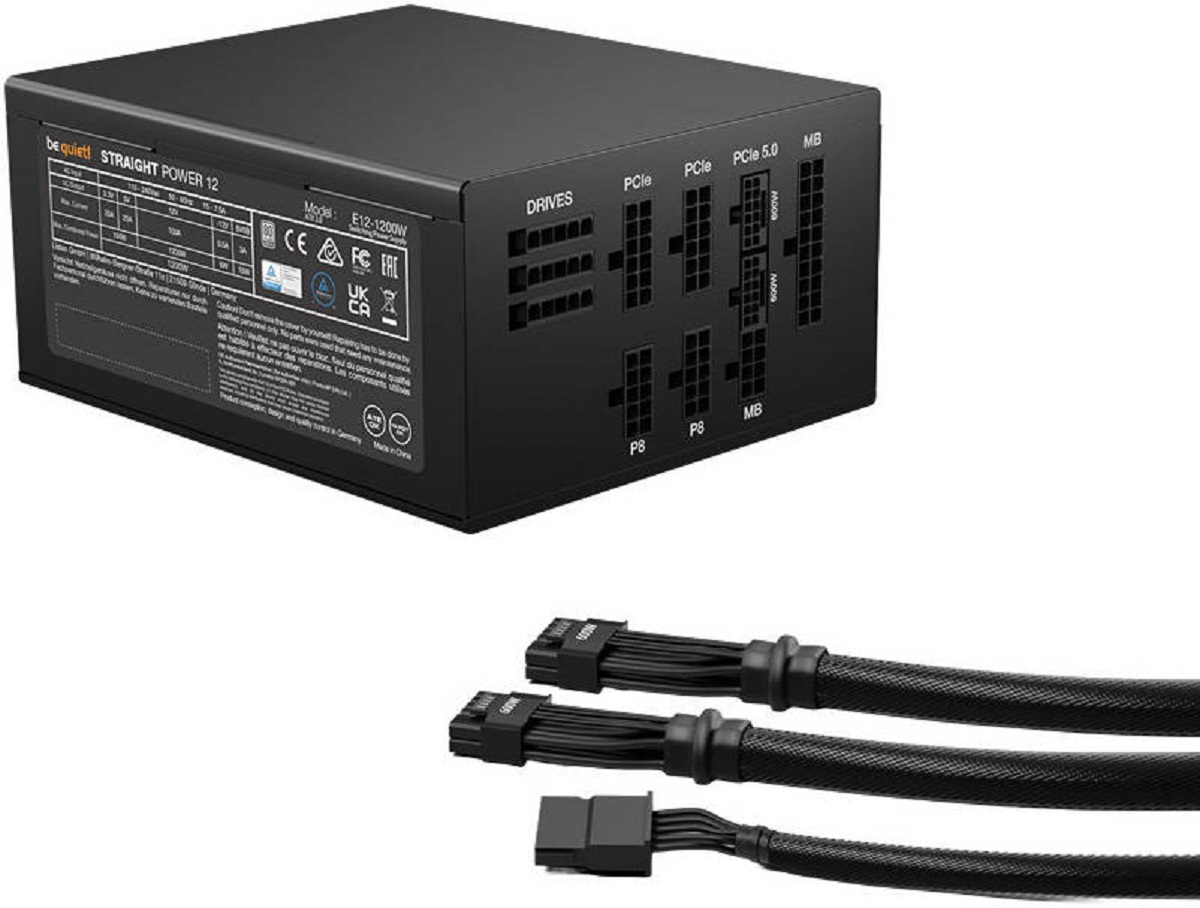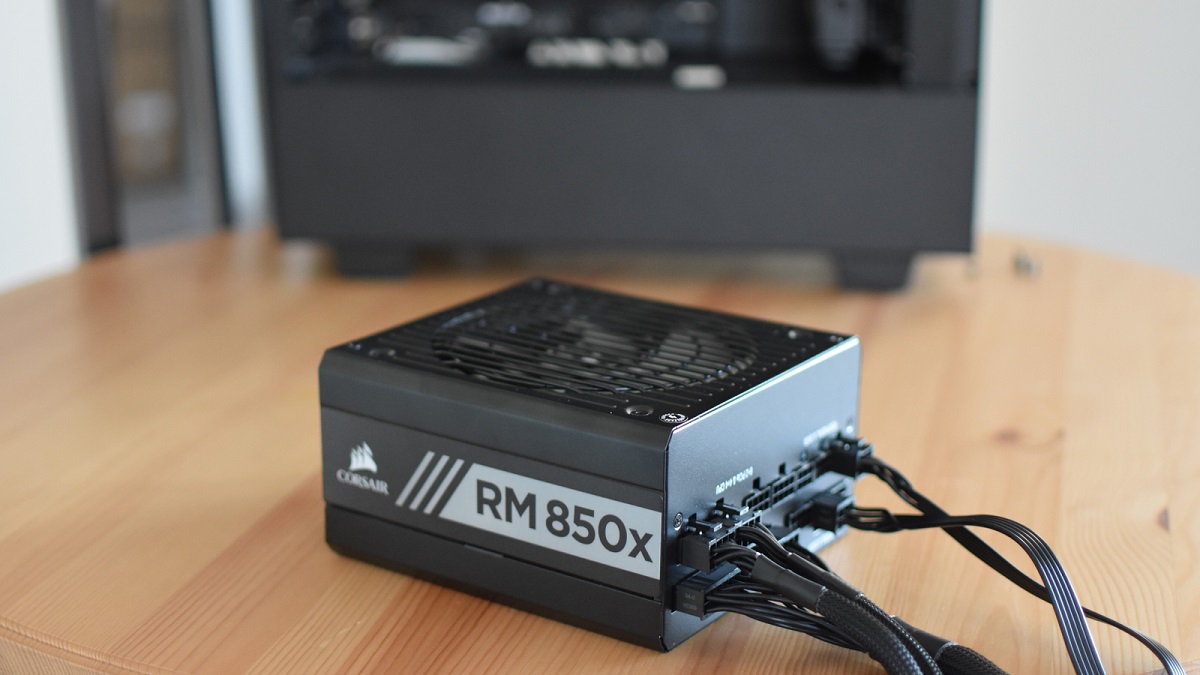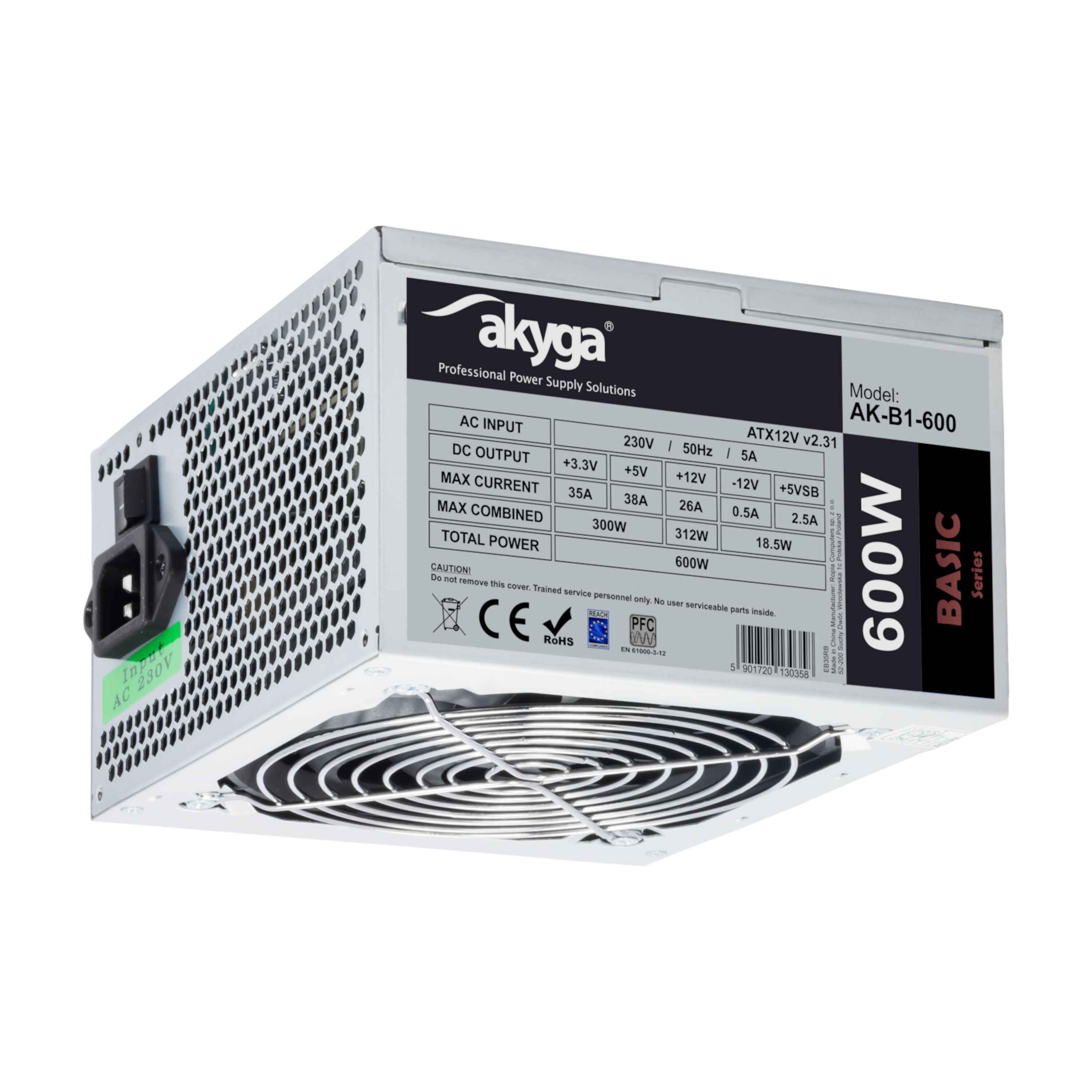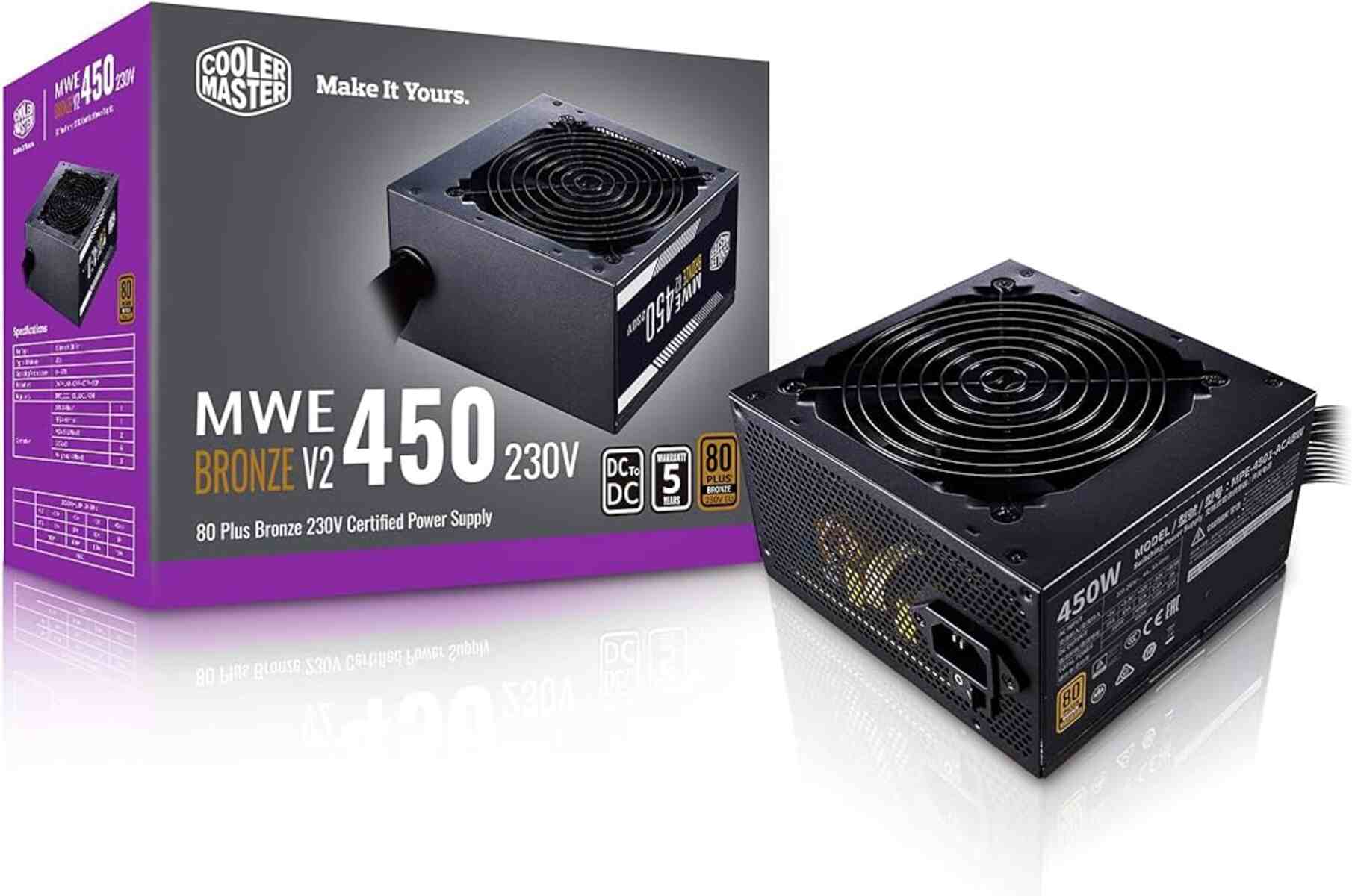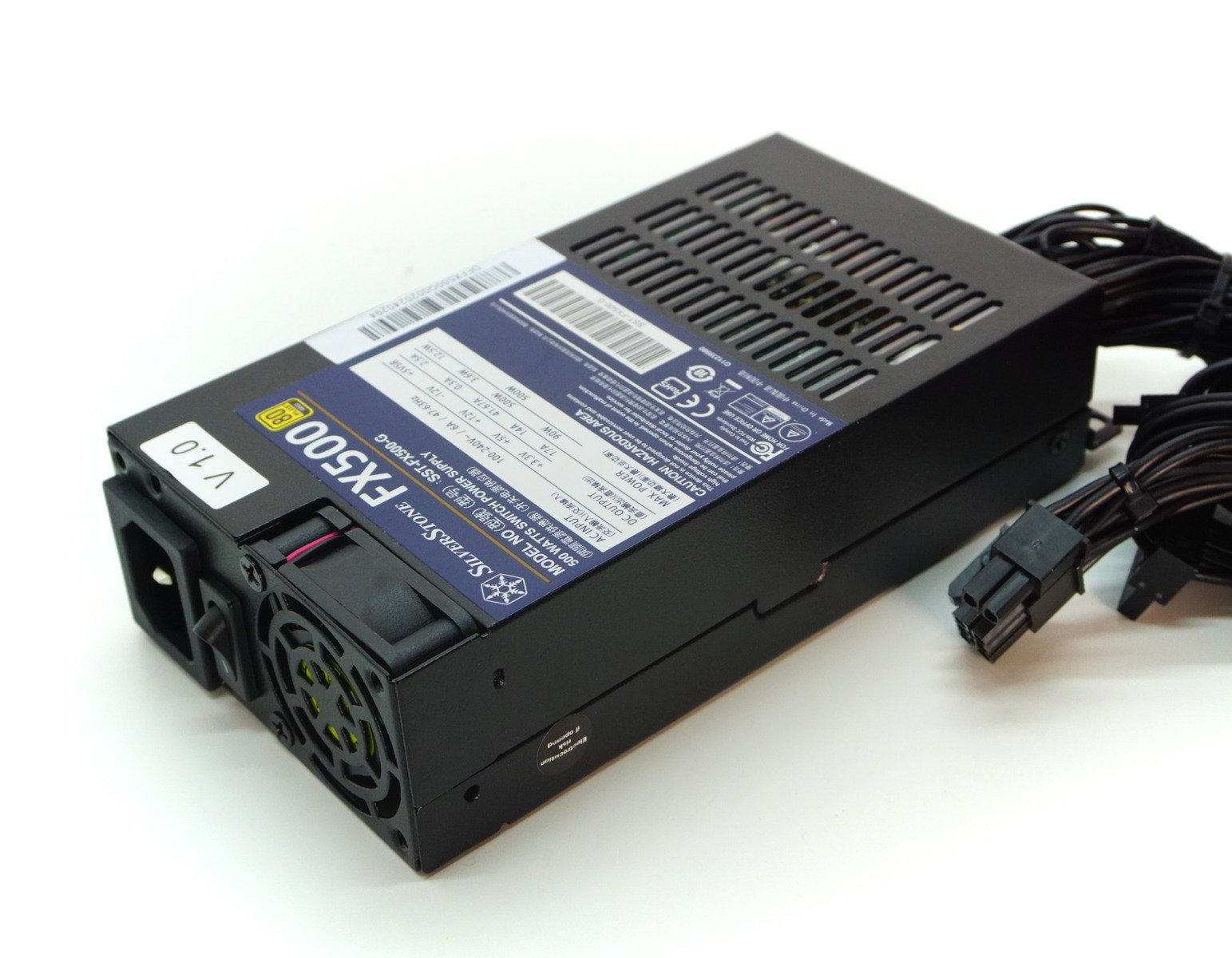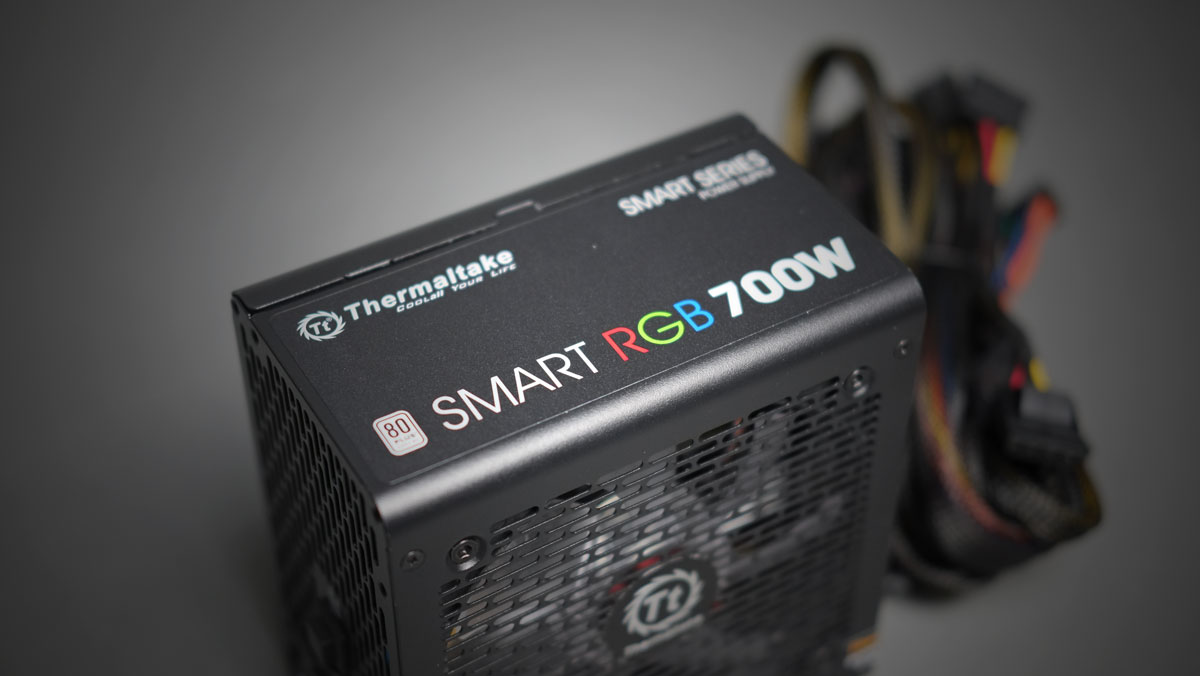Introduction
Power supply units (PSUs) are an essential component in any computer system, providing the necessary electrical power to all the hardware components. When it comes to PSUs, there are two main types: single-rail and multi-rail. In this article, we will focus on the latter and explore what a multi-rail PSU is, how it works, and its advantages and disadvantages.
A PSU is responsible for converting the AC power from the electrical outlet into DC power that can be used by the computer’s components. It supplies power to the motherboard, graphics card, storage devices, and other peripherals. The overall performance and stability of a computer system heavily rely on a reliable and efficient PSU.
A multi-rail PSU, as the name implies, has multiple rails or channels that distribute power to different components of the computer. Each rail is designed to handle a specific load or group of components. By dividing the power output into separate rails, a multi-rail PSU aims to prevent overload and ensure the stability and safety of the system.
Unlike a single-rail PSU, which has only one rail supplying power to all the components, a multi-rail PSU assigns different rails for different components. For example, a high-performance graphics card and CPU may be assigned their own dedicated rails, while other less power-hungry components share another rail. This division helps to distribute the load evenly and prevent one component from drawing all the power and causing instability.
Multi-rail PSUs employ various methods to regulate and control the power distribution. These include over-current protection (OCP), over-voltage protection (OVP), and short-circuit protection (SCP). These safety features act as safeguards, ensuring that each rail delivers the appropriate amount of power without risking damage to the components or the PSU itself.
In the following sections, we will delve deeper into how a multi-rail PSU functions, its benefits, drawbacks, and compare it to a single-rail PSU to help you make an informed decision when choosing a power supply unit for your computer system.
What is PSU?
A Power Supply Unit (PSU) is a crucial component of a computer system that converts the incoming electrical power from the wall outlet into a form that can be utilized by the various hardware components. It is responsible for providing a stable and reliable power output to ensure the proper functioning of the computer.
The PSU is typically located inside the computer case and is connected to the motherboard, graphics card, hard drives, and other peripherals. It supplies power to these components by converting the alternating current (AC) from the wall outlet into direct current (DC) that the computer components require.
The output power of a PSU is measured in watts, which determines how much electrical power it can deliver to the system. The power requirements of a computer system depend on the hardware components installed. High-performance systems with powerful processors, multiple graphics cards, and numerous storage devices usually require higher wattage PSUs to ensure optimal performance.
PSUs come in various form factors to fit different computer cases, such as ATX, SFX, and TFX. They also have different efficiency ratings, with higher efficiency indicating less power loss during conversion, resulting in reduced heat generation and lower energy consumption.
In addition to providing power, PSUs also play a crucial role in protecting the computer system. They include safety features such as over-voltage protection (OVP), under-voltage protection (UVP), over-current protection (OCP), and short-circuit protection (SCP) to safeguard the components from electrical faults and prevent damage.
When selecting a PSU, it is essential to consider the power requirements of the components in your system, the efficiency rating, the reliability of the PSU manufacturer, and the warranty offered. A reliable and high-quality PSU ensures stable power delivery, protects your components, and contributes to the overall performance and longevity of your computer system.
What is Multi-Rail PSU?
A multi-rail PSU, also known as a multiple-rail power supply unit, is a type of power supply that includes multiple power distribution channels or rails. Each rail is responsible for supplying power to specific components of the computer system. This division of power distribution allows for better control, stability, and protection of the system.
In a multi-rail PSU, the power output is divided among the various rails based on their designated load capacity. Each rail is designed to handle a specific group of components, such as the motherboard, graphics card, CPU, and peripherals. By allocating power to each rail, the PSU can ensure that no single component can draw excessive power and potentially overload the PSU.
One of the main benefits of a multi-rail PSU is improved power delivery and stability. By distributing the power load among multiple rails, the PSU can better handle high-demand components that require a significant amount of power, such as high-performance graphics cards or CPUs. This prevents one component from drawing excessive power and causing voltage drops or instability in the system.
Moreover, multi-rail PSUs often include safety features such as over-current protection (OCP) on each individual rail. This means that if a specific component draws too much power, the PSU will automatically limit the power output on the corresponding rail, protecting both the PSU and the component from potential damage. In this way, multi-rail PSUs offer an additional layer of safety and protection for your computer system.
The number of rails in a multi-rail PSU can vary depending on the model and wattage. Some multi-rail PSUs may have two, four, or even more rails, each with a designated power limit. It is essential to consider the power requirements of your components and choose a multi-rail PSU with sufficient power capacity on each rail to ensure optimal performance and stability.
While multi-rail PSUs offer advantages in terms of power distribution and protection, it is important to note that they require proper configuration and management. It is crucial to balance the power load across the different rails to avoid potential issues and ensure the efficient functioning of the system.
In the following sections, we will explore how a multi-rail PSU works, its benefits, drawbacks, and compare it to a single-rail PSU to help you make an informed decision when choosing a power supply unit for your computer system.
How does a Multi-Rail PSU Work?
A multi-rail power supply unit (PSU) operates by dividing the total power output into separate channels or rails. Each rail is responsible for supplying power to specific components of the computer system. This division enables better load distribution and enhances the stability and protection of the system.
When an electrical current enters the multi-rail PSU, it is distributed among the different rails based on their designated load capacities. Each rail is responsible for delivering power to specific groups of components. For example, one rail might be allocated for the motherboard, another for the graphics card, and another for the CPU and peripherals.
The allocation of power ensures that no single component can draw an excessive amount of power from the PSU. This prevents overloading and potential system instability. The capacity of each rail is determined by the PSU manufacturer based on the maximum power demands of the components it is designed to supply.
Multi-rail PSUs utilize various methods to regulate and control the power output. One common feature is over-current protection (OCP) on each individual rail. If a component connected to a specific rail exceeds its power limit, the PSU will automatically limit the power output on that rail. This protection mechanism safeguards both the PSU and the component from potential damage.
Additionally, multi-rail PSUs may include over-voltage protection (OVP), under-voltage protection (UVP), and short-circuit protection (SCP) to further enhance the safety and reliability of the system. These features monitor the voltage levels and current flow to prevent voltage spikes, drops, and electrical faults that could harm the components.
It is worth mentioning that the distribution of power among the different rails in a multi-rail PSU requires proper configuration and management. It is crucial to ensure that the power load is balanced across the rails, taking into consideration the power requirements of each component. This can be achieved by connecting high-power components to separate rails or distributing them evenly among multiple rails to avoid overloading a single rail.
Overall, a multi-rail PSU provides a more efficient and safe power distribution system for a computer system. By dividing the power output among multiple rails, it prevents overloading, enhances stability, and protects the components from potential damage. However, proper configuration and management are necessary to ensure optimal performance and reliability.
Benefits of Multi-Rail PSU
A multi-rail power supply unit (PSU) offers several advantages over a single-rail PSU. These benefits include improved power distribution, enhanced stability, and increased protection for the computer system. Let’s explore these benefits in more detail:
- Power Distribution: One of the main advantages of a multi-rail PSU is the ability to distribute power among different rails. This allows for better load balancing and prevents any single component from drawing excessive power. By evenly distributing the power load, a multi-rail PSU helps ensure that each component receives the necessary power without compromising overall system performance.
- Stability: With a multi-rail PSU, the power output is divided into separate channels, each with its own power capacity. This division prevents power fluctuations and voltage drops, which can occur in a single-rail PSU when a high-powered component demands a significant amount of power. The stable power delivery provided by a multi-rail PSU helps maintain system stability, reducing the chances of crashes, freezes, and other issues caused by power fluctuations.
- Protection: Multi-rail PSUs offer an added layer of protection for the components in a computer system. The individual rails in a multi-rail PSU typically include safety features such as over-current protection (OCP). If one component connected to a specific rail draws too much power, the OCP feature limits the power output on that rail, safeguarding both the PSU and the component from potential damage. This protection mechanism prevents overloading and helps prolong the lifespan of the components.
- Efficiency: By effectively distributing power, a multi-rail PSU can improve overall system efficiency. With a single-rail PSU, if one component demands a large amount of power, the whole system’s power is drawn through that rail, resulting in a higher load and potentially reducing efficiency. In a multi-rail PSU, the power distribution allows for better management of power requirements, optimizing efficiency and minimizing the waste of excess power.
- Customization: Multi-rail PSUs provide flexibility and customization options for users who have specific power requirements. Users can allocate different components to separate rails based on their power demands. This allows for fine-tuning of power delivery to suit the specific needs of the system. For example, high-performance graphics cards or power-hungry CPUs can be assigned dedicated rails to ensure they receive the necessary power without affecting other components.
Overall, a multi-rail PSU offers improved power distribution, enhanced stability, increased protection, higher efficiency, and customization options for computer systems. These benefits make it an attractive choice, especially for systems with high-performance components or those that require precise power management. However, it is essential to properly configure and manage the power load across the different rails to ensure optimal performance and reliability.
Drawbacks of Multi-Rail PSU
While multi-rail power supply units (PSUs) offer several benefits, they are not without their drawbacks. It’s important to consider these limitations when deciding whether a multi-rail PSU is the right choice for your computer system. Let’s explore some potential drawbacks:
- Complexity: Multi-rail PSUs can be more complex to configure compared to single-rail PSUs. Properly distributing the power load across the different rails requires careful planning and consideration of the power requirements of each component. Improper configuration or uneven load distribution can lead to performance issues or even system instability. Users must ensure the power is allocated and balanced effectively among the rails.
- Compatibility: Some older or less power-hungry components may not require the dedicated power channels offered by a multi-rail PSU. In such cases, a single-rail PSU may be more suitable and cost-effective. Compatibility may also arise when using certain high-performance components that draw substantial power. Users must ensure that the multi-rail PSU has sufficient power capacity on each rail to meet the demands of the connected components.
- Limited Power on Each Rail: Although dividing the power output into separate rails provides protection and prevents individual components from drawing excessive power, it also limits the maximum power available on each rail. If a component requires more power than the allocated maximum on a particular rail, it may not receive sufficient power, leading to performance degradation or instability. Adequate power allocation and managing component power demands are crucial to avoid this limitation.
- Cost: Multi-rail PSUs can be more expensive compared to single-rail PSUs of the same wattage rating. The additional circuitry and safety features required for managing multiple rails contribute to the higher cost. If your system’s power requirements can be met by a single-rail PSU, opting for a multi-rail PSU may add unnecessary expense. It’s essential to evaluate your power needs and consider whether the benefits of a multi-rail PSU justify the higher cost.
- Potential Overhead: In some cases, dividing the power output into multiple rails can introduce additional overhead in power conversion. This can result in slightly lower overall efficiency compared to a single-rail PSU. While the difference may be minimal, users aiming for optimal energy efficiency may prefer a single-rail PSU that eliminates this potential overhead.
Consider these drawbacks alongside the benefits when deciding whether to opt for a multi-rail PSU. It is crucial to assess your system’s power requirements, compatibility with the components you intend to use, and your comfort level with configuring a multi-rail PSU. Proper planning and knowledge of your system’s needs will ensure you make an informed decision that suits your specific requirements.
Single-Rail PSU vs. Multi-Rail PSU
When it comes to power supply units (PSUs), two main options are available: single-rail PSU and multi-rail PSU. Each type has its own advantages and considerations. Let’s compare them to help you determine which one is more suitable for your needs:
Single-Rail PSU:
- Simplicity: Single-rail PSUs are generally easier to set up and configure compared to multi-rail PSUs. They have a single power distribution channel, allowing for straightforward power delivery to all components without the need for allocation management.
- Compatibility: Single-rail PSUs are compatible with a wide range of computer systems, including those with older or less power-hungry components that do not require dedicated power channels.
- Cost: Single-rail PSUs are often more cost-effective compared to multi-rail PSUs of the same wattage rating. They offer a simpler design and fewer safety features, resulting in a lower price point.
- Power Output: With a single rail responsible for all components, a single-rail PSU can deliver the maximum power output across the entire system. This can be advantageous in situations where a high-powered component requires maximum power availability.
Multi-Rail PSU:
- Power Distribution: Multi-rail PSUs divide the power output into separate rails, allowing for precise power delivery to different components. This prevents overloading and enhances stability, particularly in systems with power-hungry components.
- Protection: Multi-rail PSUs have safety features, such as over-current protection (OCP) on each rail, providing increased protection to the components by limiting power output in case of excessive power draw.
- Customization: Multi-rail PSUs offer customization options for power allocation. Higher-power components can be assigned dedicated rails, ensuring they receive sufficient power without affecting other components.
- Stability: With the power load distributed across multiple rails, multi-rail PSUs provide better power regulation and stability, minimizing voltage fluctuations and potential instabilities in the system.
When deciding between a single-rail PSU and a multi-rail PSU, consider the power requirements of your components, the complexity you are comfortable with during setup, and your budget. If you have older or less power-demanding components, and simplicity and cost-effectiveness are important to you, a single-rail PSU may suffice. However, if you have high-performance components, desire more precise power distribution, increased protection, and customization options, a multi-rail PSU can provide better stability and power management.
It’s important to note that regardless of the PSU type chosen, ensure it has the necessary wattage, efficiency, and safety features to meet the requirements of your computer system.
Which PSU Should You Choose?
Choosing the right power supply unit (PSU) for your computer system depends on several factors. Consider the following aspects to determine which PSU type is the most suitable for your needs:
Power Requirements: Assess the power demands of your computer system. Determine the wattage needed to support all the components, including the motherboard, graphics card, CPU, storage devices, and peripherals. Ensure the PSU you choose provides sufficient power to accommodate the maximum power requirements of your system.
Component Compatibility: Consider the components in your system. Older or less power-hungry components may not benefit from the dedicated power channels provided by a multi-rail PSU. In such cases, a single-rail PSU can be more cost-effective and straightforward.
System Stability: If you have power-hungry components or require precise power distribution and protection, a multi-rail PSU should be considered. The distribution of power across separate rails helps maintain stability and prevents individual components from drawing excessive power, reducing the risk of voltage drops and instabilities.
Customization: If you prefer the flexibility to allocate power to specific components or want to fine-tune power delivery, a multi-rail PSU allows for customization. Assigning dedicated rails to high-power components ensures they receive sufficient power without affecting other components.
Budget: Consider your budget for the PSU. Single-rail PSUs are generally more cost-effective compared to multi-rail PSUs of the same wattage rating. If cost is a primary concern and your system’s power requirements can be met by a single-rail PSU, it can be a suitable choice.
Future Upgrades: Think about future upgrades or changes to your system. If you anticipate adding power-hungry components, a multi-rail PSU offers flexibility and room for expansion. It can accommodate the increased power demands and provide stability for your system as it grows.
By evaluating your power requirements, considering the compatibility and stability needs of your components, and taking into account your budget and future plans, you can make an informed decision about which type of PSU to choose: single-rail or multi-rail. Both options have their own advantages and considerations, so it’s important to select the PSU that best aligns with your specific requirements for optimal performance and reliability.
Conclusion
When it comes to choosing a power supply unit (PSU) for your computer system, understanding the differences between single-rail and multi-rail PSUs is essential. Each type offers its own set of benefits and considerations, catering to different needs and preferences.
A single-rail PSU provides simplicity, compatibility with a wide range of systems, cost-effectiveness, and the ability to deliver maximum power output across the entire system. It is suitable for systems with older or less power-hungry components, where power distribution and customization are not critical factors.
On the other hand, a multi-rail PSU offers advantages such as improved power distribution, enhanced stability, increased protection, and customization options. It divides the power output into separate rails, preventing overloading, allowing for precise power delivery to different components, and ensuring system stability, especially in systems with power-hungry components.
When making a decision, consider your system’s power requirements, the compatibility of your components, the need for stability and protection, customization options, budget, and any potential future upgrades. It is crucial to strike a balance between meeting your power needs, ensuring stability, and staying within your budget.
Remember to choose a PSU with an appropriate wattage to support your components, efficiency to reduce power loss and heat generation, and necessary safety features to protect your system from electrical faults. Additionally, consider other factors like the PSU’s manufacturer reliability and the warranty offered.
By carefully evaluating these factors and considering your specific requirements, you can make an informed decision about whether a single-rail or multi-rail PSU is the best choice for your computer system. Regardless of the PSU type chosen, selecting a high-quality PSU that meets your power needs is essential for a stable and reliable computer system.







